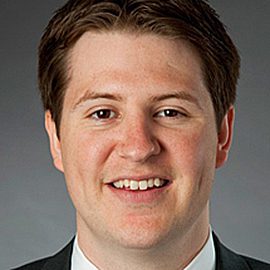
 By David W. Miller
By David W. Miller
Aug. 22, 2013
With the economy gaining strength and the Bureau of Labor Statistics reporting increases in job openings, many organizations are beginning to fear losing their top talent. According to one study, 69 percent of employees were actively looking or willing to consider a new job in 2012. To help organizations develop effective retention plans, Avatar Solutions recently conducted an analysis on a randomly selected sample of exit survey data from roughly 2,500 participants. The study found that organizations can keep top talent by focusing their retention efforts on three main areas: recognition, career development and trust.
Recognition
Avatar Solutions’ Normative Database shows recognition is the number one key driver of employee engagement. Thus, to engage and retain workers, organizations must focus on increasing recognition and developing effective recognition programs. When most organizations hear the words “recognition program,” they often think expensive incentives that can quickly eat up their overall budget. However, in actuality, even small rewards or free incentives can engage and retain workers.
A simple “thank you for your hard work” can go a long way. One proven best practice involves managers sending hand-written thank you notes to employees, recognizing them for going above and beyond their required duties. Additionally, leadership can also post positive customer comments in common areas, such that employees are publically recognized for a job well done.
To further develop recognition programs and retain top talent, managers should also ask their staff two questions: how are you currently being recognized, and how would you like to be recognized? By aligning those two questions, organizations are going one step further than the golden rule (treat employees like you want to be treated) and living the platinum rule (treat employees like they want to be treated). By tailoring recognition programs to meet the needs of employees, organizations will limit the likelihood their workers will leave for other opportunities.
Career Development
Effective career development opportunities are essential for employee retention. In the past, careers often followed clear vertical courses. However, with the recent reduction of layers of management and the fact that the multigenerational workforce is moving around rather than remaining in one organization for their full careers, new challenges have cropped up.
To develop effective engagement and retention plans, management must meet with employees to understand their desired career paths. The best way to do so is for managers to build a behavioral profile for each employee to determine what career path each individual would like to follow. The profile should identify:
- Experience = what has the employee experienced in the past (i.e., work and life experiences)?
- Current Situation = what are her current motives in life (e.g., working to feed the family, padding her resume, etc.)?
- Future Ambitions = what are her career ambitions (e.g., president of the company, managerial position, content in current role, etc.)?
Once leaders and employees have worked together to develop these profiles, the next step is to create a career plan that meets each employee’s experience, current situation, and future ambitions.
Managers may also help employees with career development by offering the option to take additional training courses for their skill sets. Allowing employees to take classes on recent industry trends, technology, or other areas of interest will help individuals feel they are developing their abilities without necessarily requiring a promotion. Meeting with employees and developing behavioral profiles as discussed previously will help leadership understand whether each employee would benefit from additional training.
Trust
Exit data also revealed Poor Supervisory/Management was listed as the number one reason employees left their organization. Furthermore, seven out of the top ten most unfavorable responses involved feedback/communication from direct supervisors or senior leadership. Only 43 percent of employees responded favorably to the item - senior management of this organization was concerned about employees. The key to increasing trust is to become transparent. Organizations that are transparent and include employees in the decision-making process are more likely to retain top talent.
Transparency starts with a direct-report’s manager. More than one third of employees (35 percent) indicated they received most of their updates from their manager while 26 percent of employees noted they received most of their information from co-workers. In contrast, roughly 52 percent of employees preferred to get updates from their direct supervisor and only 6 percent preferred to receive updates from their coworkers. Since managers are the desired line of communication, they need to be transparent and effective communicators to build or maintain trust.
Senior management is also crucial in earning and sustaining employees’ trust. The Avatar data showed the fact that the visibility of senior leadership has a strong correlation with employees’ perceptions that senior management is concerned about their employees. A proven best practice is to encourage senior management to attend department meetings and use common gathering areas (e.g., cafeteria, break room, etc.) to increase their visibility, build strong relationships, and strengthen employees’ trust.
Establishing an open door policy among managers, employees, and senior management will also help teams form trusting relationships. Workers should feel comfortable speaking with their supervisors and sharing their concerns, and managers should encourage this type of dialogue. By building a culture where every individual trusts his peers and leaders, you will create an organization that employees will find hard to leave.
In conclusion, organizations must focus on recognition, career development, and trust if they want to engage and retain their high performers. By constantly measuring and applying these three drivers of engagement, organizations everywhere will be more able to build an engaging work culture and limit top talent turnover.
David W. Miller is a senior consultant for Avatar Solutions and specializes in talent management, data analysis and communication engagements. In his time at Avatar, Miller has facilitated roughly 300 employee feedback and training sessions, as well as nearly 100 action planning sessions. Miller can be reached at www.avatarsolutions.com.








